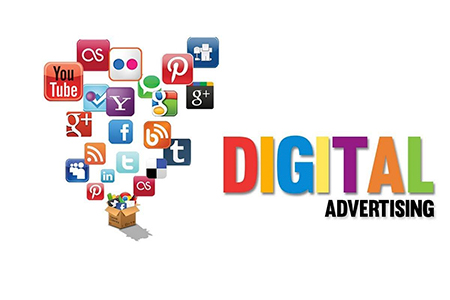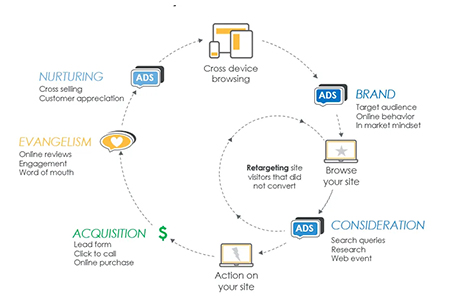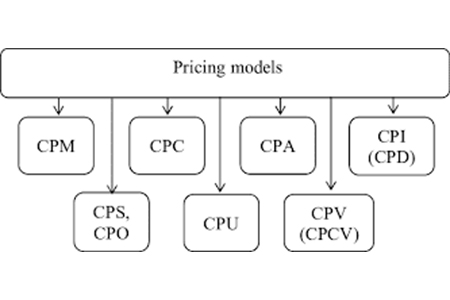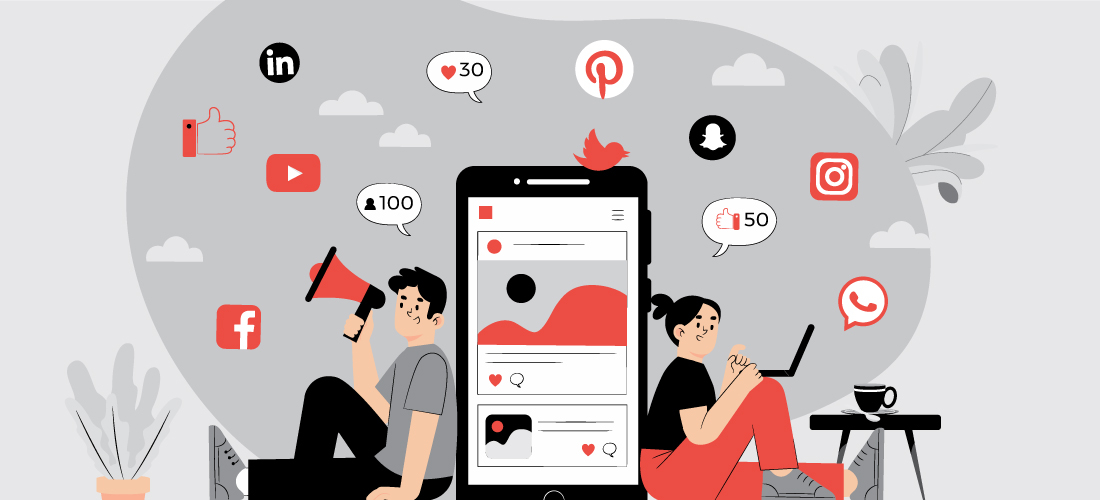Table Of Content
Introduction
Digital advertising refers to all kinds of communication made by a company to advertise and promote its brand, product, or service using the various platforms and digital channels. It usually happens in web browsers, social media pages, blogs, apps, or any other form of contact through the Internet. It is also known as online advertising. Digital marketing benefits businesses of all sizes by giving access to the mass market at an affordable price. It allows truly personalized marketing. Digital advertising is more universal and flexible, enabling you to tell your brand story on the channels that your buyers often visit.

How does Digital Advertising work?
Digital advertising is effective because it utilizes online platforms in order to deliver the right message to the right audience at the right time. It uses data-driven insights to target users in a manner that is not based on traditional advertising, therefore segmenting them into demographics, interests and behavior. Brands are able to reach consumers at their point of maximum time through media such as search engines, social media, websites, and apps. The advertisement types include banners, videos and sponsored posts which are user oriented. This allows the advertisers to understand the performance and make amendments instantaneously as the campaigns will be monitored in real-time. This makes digital advertising highly cost-effective, expandable and outcome-driven. Analytics combined with creativity can assist businesses to drive brand awareness, heighten engagements, and create a tailor-measurable outcomes that can align with their marketing activities.

Digital Advertising Metrics and Pricing Models
Conversion Rate
Conversion rate is an essential digital advertising metric as it is a measure percentage of users to achieve a desired effect, like a purchase, signing up, or downloading content. The conversion rate will be high meaning advertisements are reaching the right people and making them take action. Through the measurement of this metric, businesses will be able to measure the effectiveness of the campaigns and can determine areas of weakness. Being the direct factor influencing ROI, improvement of conversion rates turns out to be the highest priority of maximizing returns in digital advertising.
Conversion Rate Optimization (CRO)
Conversion Rate Optimization (CRO) is aimed at maximizing the number of users who follow a desired activity after engaging with an advertisement or a landing page. It consists of the study of user behavior, experimentation of various designs, content customization, and optimization of the entire user experience to eliminate conversion impediments. CRO also makes sure that the advertising funds are efficient in converting more visitors to customers. The continuous experimentation and improvement will give the businesses the potential to optimize the efficiency of their digital campaigns and attain a better, quantifiable growth.
Cost Per Click (CPC)
Cost Per Click (CPC) is a type of online advertising where the advertiser is only paid when the user clicks the advertisement. This also renders it a performance based strategy, whereby the brands invest in actual interaction, as opposed to impression. CPC rates are dependent on the competition, keywords, and targeting options. It is mostly applied in search engine and social media campaigns, where the traffic is redirected to sites or landing pages by clicks. CPC monitoring enables the businesses to strike a balance between the cost and reach to the audience, which eventually enhances the ROI of the campaign.
Cost Per Thousand Impressions (CPM)
Cost Per Thousand Impressions (CPM) is a pricing strategy in which the advertisers pay per 1000 times their advertisement is shown, irrespective of whether the user is interested in it or not. It is perfect in campaigns with the visibility, brand awareness and mass audience coverage. CPM will make sure that a message is repeated and the potential customers will know and remember it. Although this does not assure results in clicks and conversions, it is a cost-efficient method to achieve a good brand presence, particularly when combined with creative and effective advertisement designs.
Cost Per Acquisition (CPA)
The Cost Per Acquisition (CPA) is the measure of how much an advertiser has to pay to acquire a paying customer via the campaign. CPA also is a very performance-oriented model unlike CPC or CPM, which concentrates on actual outcomes. It contains the activities such as purchases that are made, subscriptions, or sign-ups. With the use of CPA, companies will be able to see the profitability of their online advertising campaigns. Lower CPA implies better efficiency, which is guaranteed by not one dollar expended without bringing tangible positive results to the business growth and customer acquisition.
Cost Per Lead (CPL)
Cost per lead (CPL) is a metric that quantifies the amount of investment required to create a prospective customer that is interested in a product or service. Examples of leads can be email sign-ups, form submissions or inquiries. CPL campaigns attract companies that want to establish good sales pipelines and develop prospects in the long run. This model is more effective in managing marketing expenditures since the advertisers pay only when they receive qualified leads. An ideal CPL plan would assist the brands to strike a balance between cost, quality and the number of leads in order to develop sustainably.
Cost Per Install (CPI)
The CPI is commonly applied to mobile apps advertising, where advertisers pay each time a user installs their mobile app as a result of an advertising campaign. This model has a direct relationship with expenditure and actual outcomes, which makes it very useful to app developers and marketers. CPI assists to measure the effectiveness of a campaign and the cost of acquiring users so that budgets are spent on actual downloads and not just on impressions. As more and more people enter the market of apps, CPI campaigns need to be optimized to get quality users and achieve long-term success of the apps.

Frequently Asked Questions (FAQs)
The most popular are Google Ads, Facebook Ads, Instagram, LinkedIn, YouTube, and programmatic platforms, which provide a strong targeting option and a broad reach to cover the effective digital advertising campaign.
In PPC, the advertisers bid on the keywords and they only get to pay when the user clicks their advertisements. The model is cost saving as it directly correlates the expenditure to the user engagement and traffic generation.
Programmatic advertisement is based on automated real-time bidding, execution of ads. It is the most efficient in targeting, reach and cost-efficiency since ads will be shown to the most relevant audience within seconds.
The digital advertising also gives the small businesses an ability to compete with a good chance of appearing on the right side, flexibility of their budgets and a gaugability of ROI that enables them to target the right audience and grow to a good extent without being forced to spend excessively.
Retargeting enables the brands to show ads to people who have already been to the website or have interacted with the content so that the brand is remembered and they come back or convert into buyers.
The budgets can be founded on campaign objectives, audience, competition and time. The alignment of resources is facilitated by a realistic strategy that would guarantee that there would be a balance between reach and results so as to achieve the maximum returns on investment.


